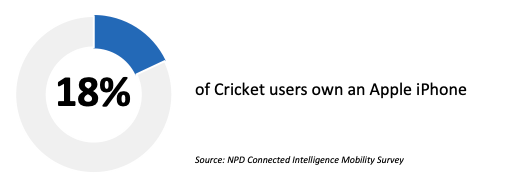
Motorola joins the top ranks with the new Edge+
Last week, Motorola announced the upcoming availability of its new premium smartphones, the Motorola Edge and Edge+. The flagship Edge+, which is a mmWave 5G device built exclusively for Verizon (in the US) is a topline phone that challenges Samsung’s new S20 series. The phone is powered by Qualcomm’s high-end Snapdragon 865 chipset and boasts an FHD waterfall display (hence the Edge branding) as well as a three-lens camera with a 108-megapixel resolution that matches the one on Samsung’s S20 Ultra 5G flagship phone. The stepdown Edge model, on the other hand, downgrades the processor to Snapdragon 765 (and a slightly smaller battery as this chipset is not as power-hungry as the 865) and the camera to a 64 megapixel one. Notably, the Edge is also 5G-powered, but it supports the Sub-6 GHz frequencies, making it an ideal option for carriers such as T-Mobile that banks on low- and mid-band 5G. The mmWave capable Edge+ will be available through Verizon beginning May 14 and will carry a $999 price tag. The carrier (and Motorola) have pledged aggressive incentives such as a $550 trade-in credit (for new lines on select plans), plus a $150 rebate card for switchers and a package of a Verizon Stream TV, an Amazon Echo Dot and a smart plug by Verizon. The Edge version, on the other hand, will be sold unlocked in the US market.
The NPD Take:
- The sleek foldable RAZR was Motorola’s comeback to the premium segment but it was merely a statement. The new Edge series builds upon the noise the RAZR has created and solidifies Motorola’s return as a prominent device maker. Notably, the OEM has also used the charm of the RAZR exclusivity to entice Verizon to commit adding the new Edge+ to its 5G lineup.
- Motorola Edge+ is one of the strongest 5G device options out there in the market, but the high price tag coupled with Verizon’s limited 5G coverage/appeal will make it a tough sell during the current economic downturn caused by COVID-19. Verizon’s mmWave 5G network has limited availability indoors; one of the main appeals of Verizon’s 5G mmWave network is enjoying ultra-high-speed connections in populated areas (such as stadiums), but the social distancing measures in place makes this value proposition obsolete for the foreseeable future.
AT&T and Verizon announced Q1 2020 results
Last week was a busy one with AT&T and Verizon announcing the financial results of their Q1 2020 operations. AT&T was the first to take the stage as the carrier announced 163K new postpaid phone net additions on top of the 300K new postpaid phone users added in the previous quarter. The carrier also enjoyed a drop in postpaid phone churn (from 0.92% in Q1 2019 to 0.86% in Q1 2020). On the other hand, AT&T announced its first drop in prepaid connections since mid-2015; AT&T’s prepaid base declined by 45K (43K of which were prepaid phones) connections during the quarter.
Verizon, the nation’s leading operator in connections, announced that its postpaid base was down by 68K connections in Q1 2020, and its retail postpaid consumer phone connections were down by 307K lines. This is not an extraordinary situation for the carrier as Verizon has historically been seeing its retail postpaid base shrink during the first quarters of the past several years. Incidentally, like AT&T, Verizon saw its retail postpaid churn drop (from %0.81 in Q1 2019 to %0.77 in Q1 2020) during this quarter.
The NPD Take:
- Both carriers announced relatively strong results for their Q1 2020 operations considering the extraordinary times we’re going through. However, it should be noted that the carrier did not see any major impact from COVID-19 until the third week of March when curfews were announced throughout the nation. With a significant number of their stores closed, both carriers have seen major drops in device sales in addition to dealing with revenue decline resulted from the increasing base of customers who are struggling to pay their bills.
- The decline in AT&T and Verizon’s quarterly churn in retail postpaid phone bases was expected as the majority of the switching activity takes place in the retail environment, and most of the company-owned stores of nationwide carriers (including the churn magnet T-Mobile) have been closed since the third week of March.
AT&T charges full throttle with iPhone SE incentives
AT&T last week announced an aggressive promotional program for Apple’s new iPhone SE budget phone that launchged commercially on April 24. The carrier announced that customers of the AT&T Prepaid and Cricket brands will be able to purchase the new iPhone SE with a $50 discount regardless of the storage capacity they pick. Notably, AT&T has also been offering an even more aggressive deal on the postpaid side, allowing customers to purchase the new SE with a for as low as $5/month (on a 30-month EIP) with new line activations on unlimited plans.
The NPD Take:
- AT&T continues to be the nation’s top carrier in terms of iPhone adoption thanks to 3+ years of exclusivity for the sales of iPhones in the US between 2007 and 2011. AT&T is working hard to maintain this iPhone base as iPhone users are less price-sensitive and have a higher propensity to spend more on additional products and services (such as accessories, warranty, and connected devices).
- The decision to lower the price of the iPhone SE for its prepaid brands will help the carrier attract new customers at a time most consumers are seeking value deals. This move should also help AT&T to better fight prepaid churn in the long run as iPhone customers tend to use their phones for longer periods thus churn less frequently.


